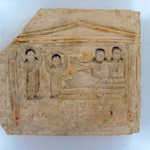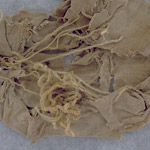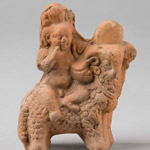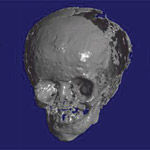Toys and Games

THE MICHIGAN EXCAVATION OF KARANIS not only uncovered hundreds of individual artifacts relating to childhood but also yielded a number of groups (or assemblages) of relevant objects. Such groups can sometimes tell us more together than the individual artifacts could separately. The photograph shows a group of toy horses found together in a clump that may represent a toy-seller’s stock. The objects in the case are from one room in a house at Karanis: they include more toy horses and other toys, as well as objects of daily life. Together these objects tell us about the people who made and used them.
TOYS AND GAMES FROM ROMAN EGYPT are both familiar and unfamiliar to us now. We can easily recognize many of the forms and features of ancient toys like wheeled horses, baby rattles, noise-makers, dice, and miniatures. But many ancient toys are less accessible. Used to realistic dolls now, for instance, we may find the Roman Egyptian examples remote and abstract. Toys from Roman Egypt vary widely in style and quality, reflecting economic realities: relatively few toys were manufactured to be sold, and many were home-made. The child’s rattle containing glass shards as noisemakers reminds us that safety standards for children’s toys were very different in the past.
Photo from the archive









